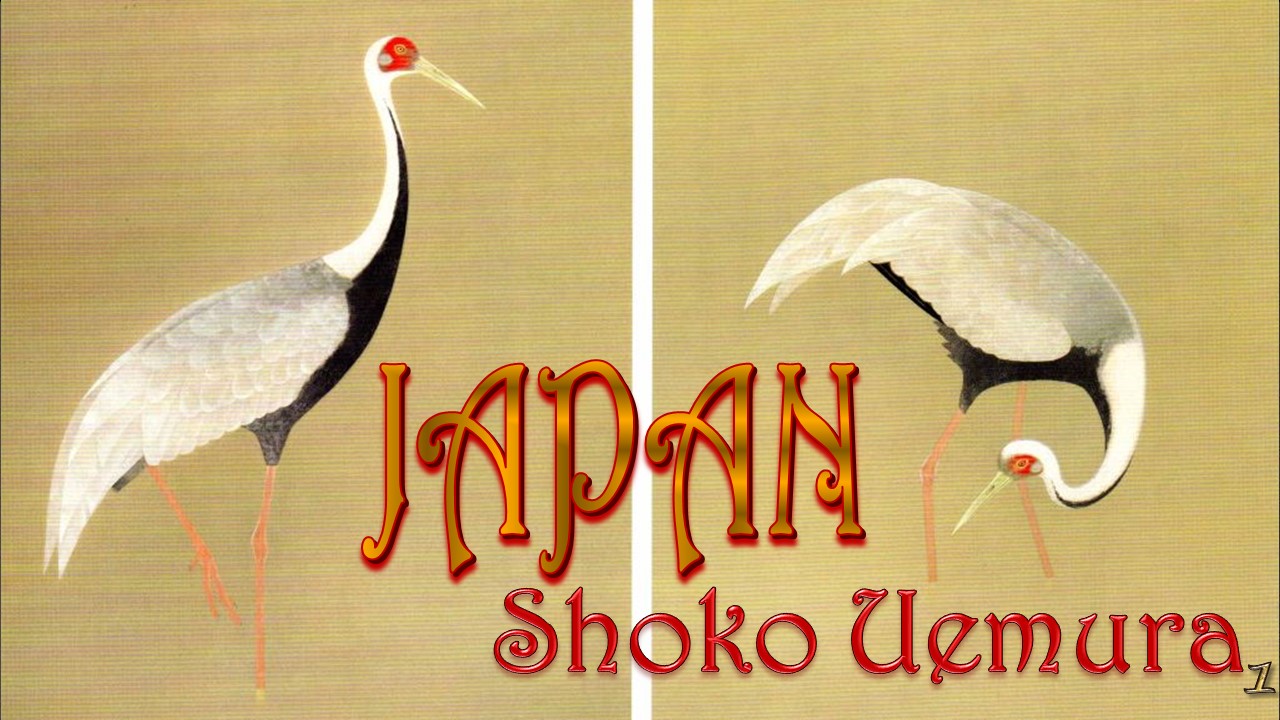Shoko Uemura 1 (Japan, 1902-2001) - PowerPoint PPT Presentation
Title:
Shoko Uemura 1 (Japan, 1902-2001)
Description:
Shoko Uemura (1902-2001) studied under Nishiyama Suisho upon entering the Kyoto City School of Painting in 1921. While at school, his work was accepted for display at the 3rd Teiten for the first time, and he later played a major role in a number of government-sponsored exhibitions (the Society for Creation of Art)". He played an active role in the Society for Creation of Art, reinventing Nihonga and imbuing fresh perspectives to paintings of birds and flowers by reinforcing them with modern compositions while still retaining the traditional sketching techniques. He was awarded the Order of Cultural Merit for his distinguished work in 1959. – PowerPoint PPT presentation
Number of Views:1
Title: Shoko Uemura 1 (Japan, 1902-2001)
1
JAPAN
Shoko Uemura
1
2
MoMAK (The National Museum of Modern Art,
Kyoto) Exhibition Shoko Uemura (1902-2001)
3
MoMAK (The National Museum of Modern Art,
Kyoto) Exhibition Shoko Uemura (1902-2001)
4
Exhibitions Shoko Uemura (1902-2001)
5
(No Transcript)
6
Shoko Uemura (1902-2001)
7
Shoko Uemura (1902-2001) was the eldest son of
renowned nihonga (Japanese-style) painter Shoen
Uemura (1875-1949). Like his mother, Shoko
trained in nihonga, and he became widely
acclaimed for his kacho-ga (paintings of flowers
and birds).
8
(No Transcript)
9
Known to challenge the refined compositions of
traditional painting, he made innovative changes
to nihonga style. For example, in his depiction
of a peacock a favorite subject of the master
Okyo Maruyama (1733-1795) Uemura trimmed part
of one of the birds wing, making it more
dynamic, appearing as it if it had just moved out
of the frame
10
Featured at the National Museum of Modern Art,
Kyoto are an overwhelming display of
approximately 70 works of art, including
"Brilliant Rain," based on tropical birds,
"Crane," surpassing past works, and "Peacock," as
well as the works he entered into his first big
exhibition at the age of 19 entitled "Quiet
Garden Welcoming Autumn" and "Night Heron," for
which he received the Minister of Education Award
for Fine Arts for "harmonizing the traditions and
reformation of Japan." The collection also
features a rare portrait painting for someone
focused on birds and flowers, such as "Spring of
a Thousand Leaves" and the sketches included with
the book Princess Nukata by Yasushi Inoue
11
(No Transcript)
12
(No Transcript)
13
(No Transcript)
14
(No Transcript)
15
(No Transcript)
16
(No Transcript)
17
(No Transcript)
18
(No Transcript)
19
(No Transcript)
20
(No Transcript)
21
(No Transcript)
22
Japanese Blue Magpie Onaga
23
(No Transcript)
24
Hibiscus
Crown cranes
25
(No Transcript)
26
Tiger finch
27
(No Transcript)
28
Kidney poor- Showa 41 (1966)
29
(No Transcript)
30
(No Transcript)
31
(No Transcript)
32
Spring Field
33
Spring evening
34
(No Transcript)
35
(No Transcript)
36
Peafowl
37
Peacock, 1983 National Museum of Modern Art,
Kyoto
38
(No Transcript)
39
A warm winter day 1933
40
Flower bird Kacho (Royal Starling)
41
Yamamusume (Formosan Magpie or Cissa caerulea)
42
Haruzu bird language Showa 4 (1929)
Furukawa
43
Late autumn 1930
Wild geese
44
Autumn
45
Tropical Flowers
Red and White Plum Blossoms
46
Red and White Plum Blossoms
47
Moonlight
48
Text pictures Internet Copyright All the
images belong to their authors Presentation
Sanda Foisoreanu
2018
Sound James Galway - Michio Miyagi -
Haro no umi (The sea in spring)































